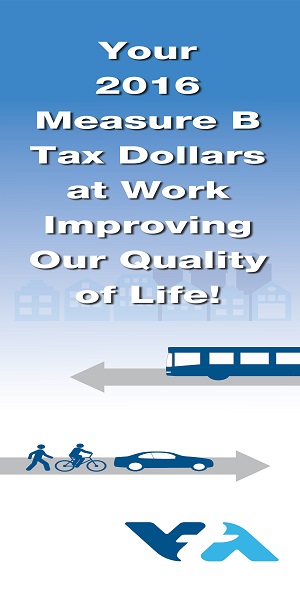A close call at the Santa Clara City Council meeting almost saw the city losing federal funding for bike improvements along three major corridors.
At its Tuesday night meeting, the Santa Clara City Council almost failed to approve a bicycle improvement plan along De La Cruz, Lick Mill and Scott Boulevards.
Micheal Liw, assistant director of public works, told the council that city employees conducted extensive public outreach for bicycle and curb modifications along the thoroughfares.
In addition to three meetings of the Bicycle and Pedestrian Advisory Committee (BPAC), the city sent out thousands of postcards, street project signs, held two community workshops, three online surveys and two popup events.
$2.7 million of grant money funds the project.
The item, and the funding that comes with it, nearly died after Council Member Kevin Park said he was dissatisfied with the preponderance of buffered bike lanes over protected bike lanes.
Buffered bike lanes provide a soft delineator from traffic, while protected bike lanes leverage street parking or bollards — typically metal — to separate cyclists from motorists.
“In my mind, there is nothing better than a protected bike lane,” Park said.
The city employees’ recommendations mirrored the BPAC recommendations, which Liw said strived to maintain street parking while pushing for two lanes across many of the road segments.
Park said he wanted to see more protected bike lanes throughout the city. Public commenters seemed to agree with him.
“As a cyclist, the biggest danger on the road is going to be a vehicle, and having that physical separation is going to stop any potential collision that is going to occur,” said Kevin Kwan.
But not everyone agreed on the primary issue at hand.
Vivian Shults said the city is not considering the forecasted boom scheduled to take place on El Camino, apropos of the city’s specific plan.
“The demand for traffic lanes and bus lanes is increasing, not decreasing,” she said. “Having street parking is, and will continue to be, essential to residents and customers moving forward.”
Because three members had to recuse themselves, Park was the swing vote.
“People say a project is better than nothing, and I think I don’t necessarily think that’s true,” Park said. “I think, at some point, people need to realize sometimes no management is better than bad management.”
The council approved the city employee recommendation in a 4-0 vote. Council Members Raj Chahal and Albert Gonzalez and Vice Mayor Kelly Cox needed to recuse themselves because of conflicts of interest.
The motion required city employees to return with more details as to how best to balance the necessity for buffered versus protected bike lanes throughout the city.
The next regularly scheduled meeting is Tuesday, March 11, in the Council Chambers at City Hall, 1500 Warburton Ave. in Santa Clara.
Members of the public can participate in the City Council meetings on Zoom at https://santaclaraca.zoom.us/j/99706759306; Meeting ID: 997-0675-9306 or call 1 (669) 900-6833, via the City’s eComment (available during the meeting) or by email to PublicComment@santaclaraca.gov.
Contact David Alexander at d.todd.alexander@gmail.com
Related Posts:
Santa Clara’s $3.9M Former City Manager Threatening to Sue for Two Weeks of Benefits
Council’s “Hands Are Tied” in Cell Tower Approval
Silicon Valley Power Plans Big Strides to Accommodate Growth this Year
Council Approves FIFA Documents







what a joke. nobody wants the bike lanes but they force them on us for the funds. Theres plenty of room for the bikes already. Nobody is getting run over. Its a big waste of green hazardous reflective paint that eventually washes away and ends up in the creeks and bay. Causes more automobile traffic causing more and pollution along with the pollution and carbon footprint that goes into putting the lanes in. City has their own agenda not in line with the citizens.
The BPAC recommendations actually overrode the city employees’ recommendations, which were to prefer protected bike lanes over buffered bike lanes. Street parking is actually the same and kept in both buffed and protected.
The actual difference between protected and buffered is instead whether the parked cars are in the middle and protect a bike lane on the side, or if the parked cars are on the side leaving the bike lane in the middle next to moving traffic separated by a few feet of paint striping in the road. The result is a huge difference in safety. Protected is much safer for bikers and reduces the number of road conflict points for parked cars.
The motion included coming up with a consistent policy for protected vs buffered because Santa Clara is inconsistent and rehashes the same discussion with unpredictable results. People who bike regularly including some councillors know the difference, have experienced downtown SJ (protected) and know the overall net benefits.
Each of the bike lanes in the motion passes by an elementary school. Giving kids and other residents a safer way to bike & scooter through town will reduce traffic and create higher value neighborhoods. The point is to use the clearly safest option when both options are otherwise comparable in their changes.